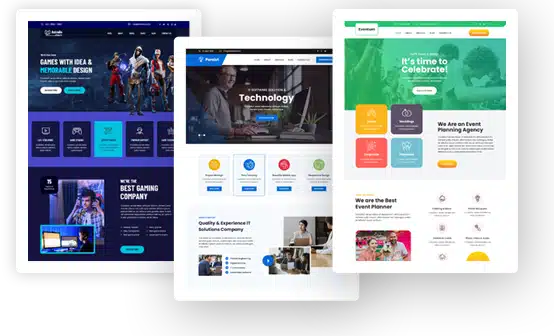Why Developers Are Choosing Headless WordPress in 2025

Some developers don’t want to think about how a website looks.
This attitude sounds negative on the surface, but it’s not a result of laziness or lack of skills. It’s a conscious decision that can be advantageous to building and maintaining a website. The main advantages are that it allows higher speed working with backends, flexibility for developers, site security, and scalability.
With more developers desiring flexibility, headless CMS, where a content management system is not responsible for website presentation and formatting, is becoming more popular. And traditional CMS, which caters for frontend and backend, is on the decline.
This article defines headless WordPress, explores performance and speed gains of a headless CMS, flexibility for modern tech stacks, scalability and cybersecurity. By the end, you’ll know if a headless CMS is what you need for your website building.
What Is Headless WordPress?
Headless WordPress means the part you see on a website is built with other tools, not WordPress. WordPress still stores all the writing and pictures, but a different tool shows them on the screen for people to look at.
The front end is what people click and read on a website, and the backend is where you write and save things for the website. The difference with headless WordPress is that the front end is made with tools like React or Vue instead of WordPress itself. Developers can choose which app to use for the frontend.
Normal WordPress websites use WordPress for both the front end and the backend. That means WordPress shows the pages and also stores the content. Headless WordPress only stores the content, but a different tool shows the pages to visitors.
Performance and Speed Gains
You can achieve a lot of performance and efficiency boosts when you use a headless CMS over a traditional one. These improvements come from offering a simpler system of building content for your website than using two systems for the front and backend.
This approach allows developers to focus on one area and make the website perform more quickly, optimizing load times and Core Web Vitals.
There are also benefits to SEO and UX. When your website loads more quickly, it will receive a higher SEO score and its content will rank higher. Plus, this improves the UX (user experience), making users want to return and consume more content, boosting traffic and revenue.
The final benefit to performance and speed is that a headless CMS allows real-time data fetching and more dynamic frontend changes because it is separate from backend activities.
Developer Flexibility and Modern Tech Stacks
There are many benefits to helping your developers adopt a more flexible approach when you use a headless WordPress CMS. And more flexibility within your modern tech stack means the backend becomes more robust as your developers can make the best decisions to make every element of the backend suit the rest of your website.
-
Ability to use modern frameworks like Next.js or Nuxt.js
Headless WordPress lets developers build websites using new tools like Next.js or Nuxt.js. These tools help make pages load faster, look better, and work better on phones, tablets, and computers without using old coding systems.
-
Tailored front-end experiences
Developers can design exactly how a website should look and work, instead of being limited by built-in designs. This helps each website feel different, match what people expect, and do what the team wants it to do.
-
Easier collaboration between content teams and developers
When using headless WordPress, people who write and manage content can focus only on writing, while developers focus only on building. They don’t get in each other’s way, so updates and changes happen faster and more smoothly.
Consider these developer flexibility benefits when deciding to invest in headless WordPress.
Cybersecurity Advantages of Headless WordPress
The benefits of a headless WordPress don’t end at speed, efficiency, user experience, and developer flexibility. You’ll also discover many cybersecurity advantages of this WordPress approach to protect your content and users.
-
Smaller attack surface area
With headless WordPress, the part of the website people visit does not include the WordPress system. That means hackers have fewer ways to try to break in. Since the WordPress part is hidden, it is harder for someone to find weak spots and cause problems from the outside.
-
Fewer plugin vulnerabilities on the public web
On a normal WordPress site, many plugins can be seen and attacked by hackers. With headless WordPress, those plugins are only used in the hidden part. This helps protect the site because the public part does not show or depend on those plugins, where people can try to break them.
-
Works well with automated pen testing tools
Headless WordPress lets developers use strong testing tools that automatically check for weak spots. Automated penetration testing tools can scan the system and help find anything unsafe before others do. Because of the split design, it’s easier to test each part of the website carefully without missing anything important or risky.
-
Higher control levels for access points and user roles
Headless WordPress gives developers more control over who can do what. It is easier to decide which users can change content and which ones can only see it. The entry points to the system can also be limited, making it harder for someone to get in without permission.
Conclusion
If you try out a headless WordPress you’ll soon notice huge benefits over a traditional WordPress approach.
With headless, you will find your website becomes quicker, more secure and your developers will enjoy greater flexibility in how they approach your backend building and maintenance.
Just bear this in mind: Headless is not the best choice for every website. What it is ideal for is developers who are building high-performance, and scalable platforms. If that sounds familiar, a headless WordPress will be perfect for your needs.
However, research costs nothing but time. So, continue to look at different ways companies are using a headless approach to website building and maintenance to see if it will work for you.

